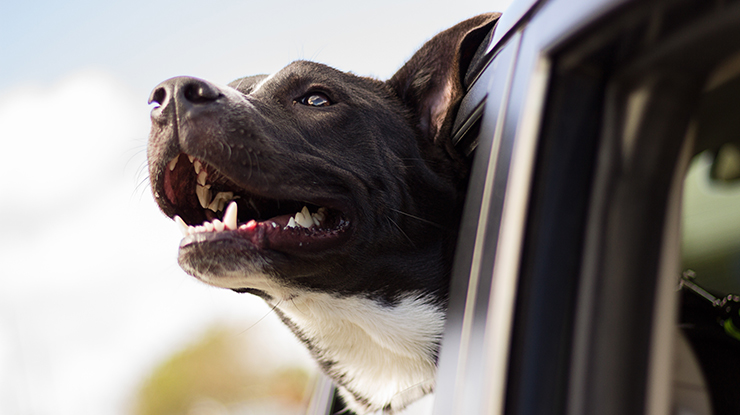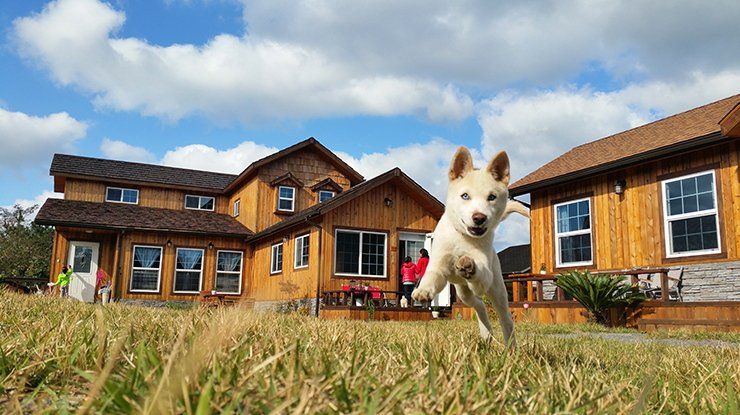
How to Help Your Dog Adapt To A New House
According to research, moving into a new home can be more stressful than starting a new job, a divorce, or even a relationship breakdown. The idea of a new life adventure is exciting, but the actual relocation can be a very daunting process.
In your mind you’re looking forward to all the new things awaiting you in a new place, but your four-footed house member is completely oblivious about what lies ahead. You might have a bit of difficulty adjusting to the new environment, but it could be even more stressful for your dog.
Preparing Your Dog for the Move
Dogs are very sensitive to the moods of people, so your dog will sense that something big is about to happen when you start packing everything into boxes. It might sound strange, but you need to verbally reassure your dog that everything is okay.
Dogs pick up your tone of voice, so if you speak in a positive and excited manner, your dog will feel reassured that everything will be fine. If your dog is used to roaming outside, consider keeping her outside while you’re packing to minimize the stress. You can give her a nice chewing bone to keep her busy and distracted. Otherwise, consider keeping your dog in her crate or a safe room where she’s used to staying. Also, keep a familiar object close by, such as the dog’s favorite blankie.
Make sure you give your dog lots of attention when you aren’t packing, and maybe treat her with some extra walks around the neighborhood. Time spent with you and away from a house full of boxes will give your dog a moment to unwind.
Consider buying a calming spray that you can use while the house is in disarray and also in the new home. The familiar smell on both sides will help your dog to relax more, and most sprays are formulated with special simulated pheromones to help calm dogs down naturally.
Reinforce a few basic obedience commands. This will be some more focused quality time for your dog to feel comforted. Plus, when you get to the other side you can use these commands to grab the dog’s attention when she seems disorientated.

Prepping for the Move
Depending on how far you will be relocating from your current home, your dog might be travelling with you by car or via airplane. The most important part of travelling with your dog is to remain calm. Don’t coddle your dog by telling her how bad you feel about putting her in a crate.
The crate will be a little safe haven for your dog. You can put in a familiar blankie for extra reassurance and consider using a chewing bone as a distraction.
You might be tempted to highly medicate your dog to just knock her out for the trip, but this plan can backfire. Your dog can start feeling even more nervous after losing control over her body. Instead, try using a calming spray to appease the nerves. Make sure you check with your veterinarian to select the best calming medication method for your dog.
Arriving on the Other Side
To ensure your dog doesn’t become panicked and run away, keep her leashed when you arrive at your new house. Go for a walk on the inside and the outside. While you are unpacking, keep your dog in a safe room or in her crate.
You can spray the calming spray in the room to familiarize the dog with the new environment and to deal with her nervousness. Give her a nice treat and maybe a bone to keep busy while you unpack. Spray the calming spray throughout the house to make it smell more familiar. She will likely recognize and associate the smell with your old house. Plus, the calming simulated pheromones of some sprays may help to keep her nerves under control.
Try to recreate as much of your old home as possible. For instance, placing your dog’s food bowls in the same spot next to the fridge. The familiar furniture will also help to get her settled in, but you will have to give her lots of time to adjust to the new house.
Remember that your dog will pick up on your moods, but as long as you remain calm the dog will realize there’s nothing to worry about in the new environment. You might be tempted to comfort her excessively, but this will likely make her more nervous. It could take roughly three weeks for your dog to become accustomed to the new house. Try your best to keep your dog in her same routine to help with the adjustment.
If possible, try to be home with your dog as much as possible in the first few days after settling into the new house. Start spending short periods away to test her response. This way you can stretch the periods away from home to a full day.
If it’s not possible to stay home, keep her entertained. You might have to lock your dog outside or keep her in a safe room while you go to work. For your peace of mind, buy some food puzzle toys to keep her brain occupied while you are gone.
Observe your dog closely. She will experience a certain level of fearfulness because of the move, but the anxiousness should fade after a few weeks. If she seems to be behaving strangely after the initial three weeks of settling in, you might have to take it to the veterinarian for a checkup.

Home Is Where You Are
In the end, your dog will be happy as long as you are close by. Don’t feel guilty about subjecting her to the stress of moving to a new house. As previously mentioned, your attitude and tone of voice are very important. If you project your guilt, your dog will likely pick up on it, and she may react negatively.
Give your dog time to adjust, stick to the usual routine, pamper her with some special attention and the occasional treat, and she should have an easier time adapting to her new environment.
Have you ever moved with your four-footed family members in tow? Any tricks you learned to make the transition easier for your dog? Share them in the comments!
---------------
About the author – This article was provided by theeverythingdogsite.com. Theeverythingdogsite.com is a blog dedicated to dogs and aims to help promote responsible dog ownership. You can also follow theeverythingdogsite.com on twitter.











